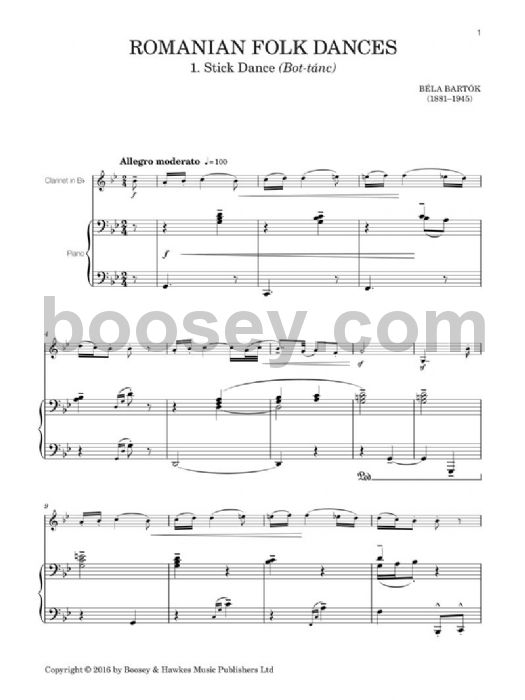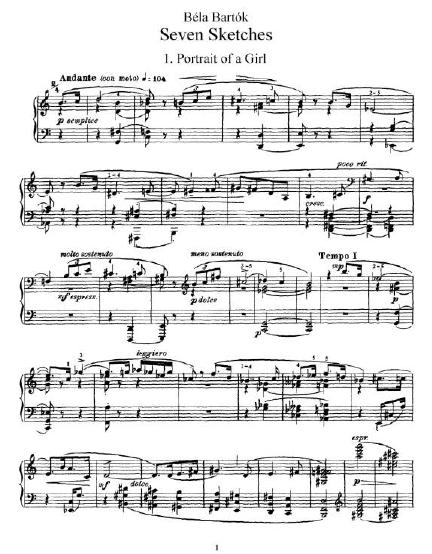

The third dance comes also from Egres (Igriș), but its theme is much darker and its melody recreates Middle Eastern instruments, such as the flute. This melody came from Egres (present-day Igriș), in the Banat region. The second movement is a typical dance from Romania called Brâul, for which traditionally a sash or a waistband was used. The melody of the first movement, according to Bartók, came from the Mezőszabad (present-day Voiniceni) village that was part of Mezőcsávás (present-day Ceuașu de Câmpie) commune which was located in the Maros-Torda administrative county within Transylvania, and he first heard it when two gypsy violinists were playing it. András Ligeti, Budapest Symphony Orchestra.1994. Frank Zappa recorded part of the concerto in 1988 on his last tour, and it is included in his album, Make a Jazz Noise Here, alongside an extract from Stravinsky's Histoire du Soldat.London Symphony Orchestra under conductor Pierre Boulez, Soloist: Hélène Grimaud, 2004.Budapest Festival Orchestra under conductor Iván Fischer, Soloist: András Schiff, in April 1996 recorded in Budapest in the Italian Cultural Institute.

New Philharmonia Orchestra under conductor Sir Malcolm Sargent, Soloist: John Ogdon, recorded prior to 1968 in Europe, Angel/EMI.Radio-Symphonie-Orchester Berlin under conductor Ferenc Fricsay, Soloist: Géza Anda, 1959/1960 recorded in the Jesus Christ Church in Berlin.^ Nissman, Barbara, Bartók and the Piano: A Performer's View, The Scarecrow Press, Inc., Lanham, pp.^ Whittall, Arnold, The Concerto in Modern Times: Central Europe in the Twentieth Century in A Guide to the Concerto, edited by Layton, Robert, Oxford University Press, p.3' Booklet note for Hungaroton HCD 31888-91 (2000) ^ a b Kovács, János, 'Concerto for Piano and Orchestra No.“Revised Bartók composition highlights Pro Musica concert.” The Republic 16 February 1994. 'Columbus Indiana Philharmonic | Columbus Indiana Philharmonic History'. Berkeley: University of California Press, 1996. Béla Bartók: Composition, Concepts, and Autograph Sources. 'Béla Bartók's works, corrected editions'. “Third Piano Concerto in the Revised 1994 Edition: Newly Discovered Corrections by the Composer.” Hungarian Music Quarterly 11, Nos. ^ a b c Gillies, Malcolm, 'Final Chamber Works', in The Bartók Companion, edited by Malcolm Gillies (Portland, Oregon: Amadeus Press, 1993), pp.^ Antokoletz, Elliott, The Music of Béla Bartók: A Study of Tonality and Progression in Twentieth-Century Music, Univ.^ Morgan, Robert P., Twentieth-Century Music, W.


 0 kommentar(er)
0 kommentar(er)
